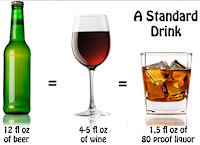Brunello di Montalcino is a red DOCG Italian wine produced in the vineyards surrounding the town of Montalcino, in the province of Siena, located about 80 km south of Florence, in the Tuscany wine region. Famous for being the DOCG with the longest ageing requirement and for its prodigiously tannic, age-worthy Sangiovese, Brunello di Montalcino is a gem among Italy’s fine wine regions.
Notes on the vintage
Decanter magazine
Brunello di Montalcino 2010 – the finest vintage yet?
The near-perfect growing conditions in 2010 have resulted in one of the finest vintages in a generation. The beautiful conditions produced first rate Sangiovese, which in the hands of skilled wine makers has resulted in the finest examples in a generation, better even than the highly-rated 2004 and 2006 vintages. 2010 really is something special.
The 2010 vintage provided perfect conditions throughout the year and is clearly exceptional. Generous rainfall enabled vital refilling of the reserves during winter and the spring continued this theme, bringing vigour to the vines, whilst the weather during the summer months was warm enough for optimum ripening and moderated by very few heat spikes which kept away the threat of over ripeness. The end result brought wines of depth and complexity, with good levels of acidity bringing freshness to the sumptuous fruit and ripe, assertive tannins. There is tremendous structure behind these wines which suggests a long, illustrious life ahead.
Brunello di Montalcino 2010 panel tasting results August 14, 2018
Rated as one of the top all-time vintages in Montalcino, many unheralded producers did very well in this tasting.
Jancis Robinson
Tuscany 2010
Much cooler than the hot 2009. A very wet winter continuing into a very wet spring was followed by a cool growing cycle. The heat that came in July helped to reduce the delay in ripening that was by then an estimated 15 days behind schedule. Sangiovese was harvested as late as the third week of October and many producers had to do several pickings to obtain regularly ripe grapes in the fermentation tanks. Montalcino, exceptionally, was drier than other parts of Tuscany and the long and slow ripening of the grapes resulted in what is considered an outstanding vintage with true ageing potential for years to come.
Wine Scholar Guild
Tuscany 2010
The growing season was quite warm, but not torrid in 2010, with average rainfall totals spread out throughout the year. Thanks to warm days and cool nights in the weeks leading up to harvest, the grapes were picked at excellent levels of ripeness. Despite the warm temperatures, acidity levels are higher than normal, giving these wines excellent aging potential. Look for 15-20 years of drinkability with the top wines.
Vintage charts
Wines to taste
Brief tasting notes
Bottles were opened 4 hours before tasting; all wines opened up in the glass when poured, suggesting that they could have been opened much earlier. The eight amateur participants rated all of the wines as excellent.
Val di Suga Montalcino
After discussion, voted third best. Opened up in the glass: forest floor, tar, resin / rubber, red berries, butter. Taste of fig, with citrus and earth aftertaste. Went well with the food at the end of the tasting (Mediterranean pie).
Fattoi
Cork very hard to remove. Strong berry / acid combination in the mouth; and took much longer to open up in the glass. Aroma of mint, salami, tar: and taste of jammy plum and citrus. Quite different to the other wines; and everyone agreed that it went best with the food at the end.
Col d'Orcia
Much less tannin / acid initially. After discussion, voted equal fourth best. Aroma of soil / wet leaves and pot pourri; rich taste of acid, plum and soil / cigar box, aftertaste of citrus and tannin.
Tenuta La Fuga
Darker colour. Less tannin / acid and milder taste initially, but opened up. However, much more elegant immediately, and voted as the best wine by all participants. Aroma grass / vegetation initially. Mild but elegant taste, notably liquorice, plum, leather, tannins.
Fattoria dei Barbi
After discussion, voted equal fourth best. Mild initially, pine needles, but opened up to aroma of plum, vanilla, pine / resin; taste of resin / kerosene initially, followed by very fruity plum.
Castiglion del Bosco
Hardly any pale rim, and much darker throughout; less tannin / acid, but keeps it — clearly destined for a long life. After discussion, voted as second best. Started with least taste initially, but later much stronger fruity flavours, notably plum.
Afterword
When dealing with a comparative wine tasting, we might consider how the Ancient Greeks viewed time. They had two words for time: Chronos and Kairos. Chronos refers to the quantitative or measurable passage of time. Kairos refers to a qualitative assessment of the right time, the opportune or perfect moment. Clearly, when deciding when to open a bottle of wine we consider Chronos, but we are also hoping for Kairos. A good wine tasting gets both concepts right.













